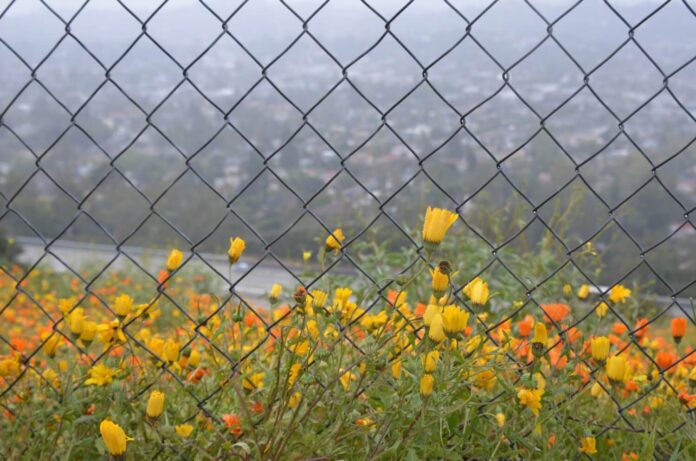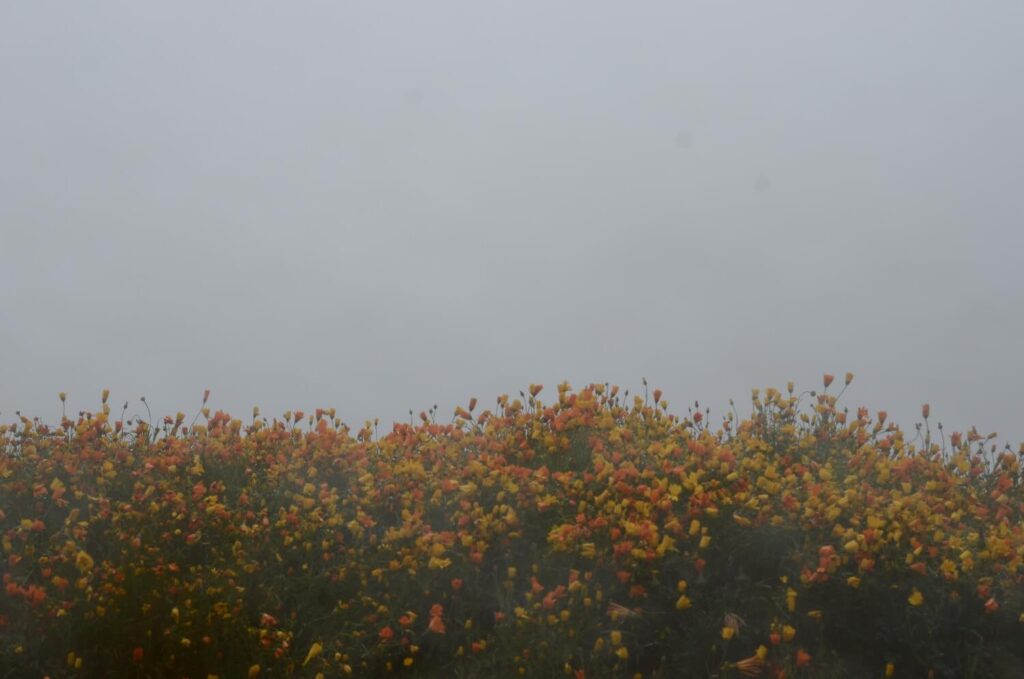
The super blooms of Southern California are colorful spectacles. During the poppy super bloom of 2019, over 100,000 people visited the trails of Walker Canyon in Riverside County in a single weekend.
A local bloom in Scholl Canyon generated buzz on Facebook’s Eagle Rock Neighborhood Group, and posters used the term “super bloom” to describe the flowers by Scholl Canyon Fire Road Trail in Glendale.
Frannie DiBona* (senior) hiked this trail Feb. 20 and said she saw the posts on the Eagle Rock Neighborhood Group prior to the hike.
“I knew that it was happening because I’d actually seen it from the freeway,” DiBona said. “I had never seen the flowers but I’d done the hike before.”
Occidental biology professor Gretchen North currently teaches “Flora of Southern California,” and she said the blooms around Eagle Rock are most likely not native plants and are mini-blooms. According to North, actual super blooms always occur after heavy rains in late winter in Southern California.
North said a super bloom requires a period of dry years followed by a heavy rain so that the seed bank has built up over time.
“Most of the seeds never germinate because there’s not enough rain. But if there’s a period of three, four or five years of drought, then the seed bank is primed and ready to go. Then, with the rain, their bloom is synchronized, and the super bloom just seems like such a relief,” North said.
According to North, there is a link between these super blooms and climate change.

“if you don’t get repeated intervals that are wet, when the seed bank can be restored, you won’t have a super bloom anymore,” North said.
North said she encourages Occidental student to both appreciate local blooms but also to take the time to go to the desert and see, for example, displays like the rare super bloom of 2016 in Death Valley.
The Theodore Payne Foundation for Wild Flowers and Native Plants (TPF) is a nonprofit in LA that is devoted to education about native plant landscapes. Diego Blanco, an administrative assistant for TPF, said that many of the wildflowers native to the area are annuals which means their seeds may lay dormant for many years but their lifespan is only a single year.
“There’s not really an official threshold for what constitutes a super bloom, it’s more just that the wildflower bloom is significantly above average. That only happens in the rare case that all of those conditions for the germination and growth happen in the same year,” Blanco said. “So you get really heavy winter rainfall, you get a lack of wind in the growing season, and you get the warm spring temperatures. When all three of those things happen at once, then you get this whole mass germination and mass bloom that becomes what you call the super bloom.”
TPF runs a wildflower hotline during the bloom season beginning in March to direct callers to local native bloom sights. According to Blanco, the bloom in Eagle Rock consists of ornamental flowers known as ice plants that are planted during landscaping, but other blooms of native plants are not too far away.
“Right now some of the places south of us like Chino Hills, those are already starting to bloom because they have warmer temperatures and they’re not as high of elevations,” Blanco said. “The wildflower hotline is meant to inform people where the wildflowers are. We encourage people to interact with those wildflowers in a respectful way that doesn’t cause problems for the ecology or damage the seed bank and the soil.”
Although the Eagle Rock blooms are not super blooms, the spectacle of flower growth still attracts many, and there are many opportunities nearby to appreciate and witness a blooming event of the native flora of Southern California.
Contact Ava LaLonde at lalonde@oxy.edu
![]()


































